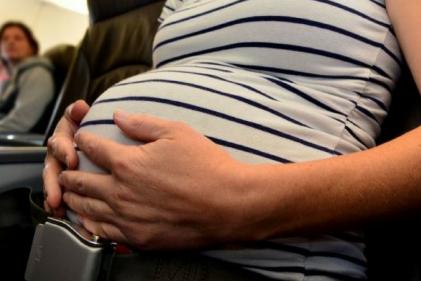In the past couple of decades, the C-section procedure went from an emergency response to a fairly regular occurrence. There is little risk for either mother or child with a C section birth today. There are actually two types of C-section operations, the low transverse incision and the classic C-section.
The classic C-section involves a long, vertical incision across the abdomen. This incision cuts through all the tissue, muscle and fat in order to reach the child. This is an old school procedure, effective in making more space for the delivery. Today, this procedure is not as common due to the fact that there are few problems and a better placed scar with the low transverse incision.
The more common C-section is the low transverse incision. It is different because the scar is better placed, along the top of the bikini line, and there is a smaller chance of blood loss, infections and other complications. After the incision is made into the lower part of the uterus, the baby’s amniotic fluid is suctioned out to make room, and then the doctor is typically able to just pull the baby out.
These are both best case scenarios and if something were to go wrong, there are other techniques or additions to these procedures that will be implemented.
The classic C-section involves a long, vertical incision across the abdomen. This incision cuts through all the tissue, muscle and fat in order to reach the child. This is an old school procedure, effective in making more space for the delivery. Today, this procedure is not as common due to the fact that there are few problems and a better placed scar with the low transverse incision.
The more common C-section is the low transverse incision. It is different because the scar is better placed, along the top of the bikini line, and there is a smaller chance of blood loss, infections and other complications. After the incision is made into the lower part of the uterus, the baby’s amniotic fluid is suctioned out to make room, and then the doctor is typically able to just pull the baby out.
These are both best case scenarios and if something were to go wrong, there are other techniques or additions to these procedures that will be implemented.
Here is a step-by-step outline of what exactly happens during a caesarean
- A catheter is fitted. Once the anaesthetic is administered and you are numb, a fine tube is inserted through your urethra into the bladder
- The top of your public fair is shaved. If the caesarean is planned, you can do this yourself at home. However, if it is unplanned, your midwife will shave you and clean the area with antiseptic.
- A screen is set up. The screen is placed across your chest so you won’t see the operation. If you wish to see your baby as it’s lifted out, you can ask the screen to be lowered.
- Two cuts are made. The first cut is through the skin and the second is through your womb.
- You will hear a gurgling noise. This is the sound of the amniotic sac and fluid being suctioned out as the doctor opens.
- You might feel tugging. There won’t be any pain, but some women claim to feel tugging as the baby is lifted out, as if someone is the washing up inside their tummy.
- The baby’s cord is cut. If there have been no complications, you will be handed your baby.
- The placenta is removed and you are sewn back up. The procedure takes about an hour from when you first go into theatre.












